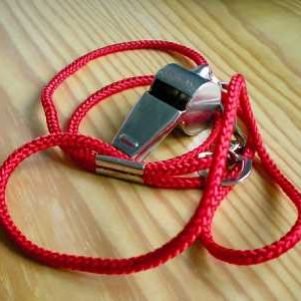Asset seizure, or attachment, is a process that enables creditors to collect from delinquent debtors by looking to their assets, including property, goods, and/or earnings.
There are two principal types of attachment: attachment in aid of execution and preventive (or precautionary or future) attachment. The first occurs when a judgment declaring pecuniary debt has already been entered, while the second is an interim measure when it is likely that a judgment will be entered in the future.
Article 1911 of the Spanish Civil Code expresses what is known as Universal Asset Liability, providing that debtors will be held accountable for their financial liabilities with any and/or all of their present and future assets. This principle grants creditors a right of action to collect outstanding debts from the personal assets of debtors. That is, if a debtor does not voluntarily pay the creditor per the terms of the agreement in question, the creditor may then pursue the assets of the debtor.
Attachment may be levied on assets belonging to a debtor in multiple countries, thus creditors are not restricted to the country where the debtor owes.
When a creditor obtains an order of attachment against a debtor in a foreign court and wishes to have it enforced in Spain, the process varies according to the country rendering the decision. European Union countries must follow EU Regulation 44/2001 on the recognition and enforcement of foreign judgments, which compels countries to automatically recognise, in the absence of any dispute, judgments from other EU nations.
The procedure for judgments from jurisdictions outside the EU is generally more complex. It is necessary to determine whether the process of recognising and enforcing awards has been regulated according to a bilateral agreement, or if judgments generally have been recognized and enforced out of principles of comity or otherwise.
Non-Attachable Assets
Under the Spanish Civil Procedural Law, various types of property cannot be attached: (1) inalienable goods; (2) accessory rights that cannot be alienated without the principal; (3) non-capital goods; (4) property that legal provision mandates may not be attached.
In addition, certain goods belonging to the debtor are not attachable: (1) furniture and household goods, clothing of the debtor and debtor’s family, and any goods that a court decides are necessary to live reasonably; (2) books and other necessary supplies for a profession, job, or art; (3) religious items; (4) items expressly declared non-attachable by law; (5) goods and amounts that are not attachable according to treaties ratified by Spain.
In addition, attachments levied on assets which may not be attached are null and void. If this occurs, a debtor may seek judicial recourse denouncing attachment.
Attachable Assets
Attachable assets include money, government bonds, private value titles, jewellery, livestock, moveable and real property, and business establishments. The law also recognizes attachable rights to marketable assets, proceeds, profits, income, pensions, and non-marketable assets.
Salaries and earnings are also attachable but subject to restrictions. Amounts above the minimum intersectoral salary (minimum wage) are attachable on a sliding scale: anywhere from 30 to 90 per cent of debtors’ earnings may be attached depending on the percentage their salary is above the legal minimum.
Order of Attachment
First and foremost, any agreement between the parties prescribing how the debtor’s assets will be attached in the event of default will be adhered to. If not, the tribunal has the discretion to determine what property to attach, keeping in mind it should be that which is the easiest to transfer and the least onerous on the debtor.
Otherwise, Spanish law dictates that property should be attached in the following order:
- Any kind of money or checking accounts;
- Short-term marketable credits and rights, titles, stocks or other financial instruments listed in a securities market;
- Jewellery and works of art;
- Income, regardless of origin or accrued amount;
- Any kind of interests, income, and profits;
- Moveable assets or livestock, shares, titles, or unlisted securities;
- Real property;
- Wages, salaries, pensions and income from independent professional and commercial activities;
- Medium- to long-term marketable credits, rights, and stocks.
The law also provides for the seizure of businesses under certain circumstances.
Attachment Procedure
Once a judicial order is in effect, rendering attachment valid and enforceable, a creditor may disclose the assets to be attached, if the creditor knows. Otherwise, the debtor has to disclose the attachable assets. The debtor is also expected to explain his/her situation and notify whether any real estate is currently in use. If a debtor does not fulfil this duty to disclose, sanctions and other measures may be imposed upon the debtor. A court may impose periodic coercive fines upon a debtor in the event of non-compliance with demands for disclosure.
Absent sufficient knowledge, a creditor may request judicial intervention to determine attachable assets. In this instance, a deputy clerk will communicate with any financial institutions, public entities or registries, individuals, or legal entities designated by the creditor to determine the assets held by the debtor.
Third-Party Attachment
In the event an attachment is levied on assets that are believed to belong to a third party, notification of the attachment must be given. The third party then has five days to object to the attachment. If the third party does not come forward with evidence pointing to ownership, the deputy clerk will then add the case to the proceedings before the Tribunal.
However, where the property in question involves a registered deed, this property is not attachable if the third party comes forward with a registered title.
Practical Legal Advice
For Creditors
- Research the debtor’s assets before commencing a proceeding. Find out if the debtor has assets abroad to determine whether you can initiate a proceeding in another country as well.
- It is best to compel borrowers to disclose information about their assets at the outset of a loan agreement. This will serve to facilitate any potential attachment proceeding.
- If this is a cross-border proceeding, find out the requirements in both countries to determine the feasibility of having an order of attachment granted and having it enforced in another country. You want to ensure that the judgment will be enforced where the debtor’s assets are located.
For Debtors
- The best course of action is undoubtedly to avoid the non-payment of debts that can lead to the seizure of your assets.
- For individual debtors, the first assets to be attached are wages, balances in checking accounts, and other monies. You could potentially lose available credit as a form of attachment.
- If you wish to safeguard certain assets, you may expressly stipulate in the contract which assets are to be seized in the event of non-payment of debts.
For additional information regarding the attachment of assets in Spain,





